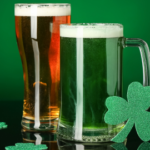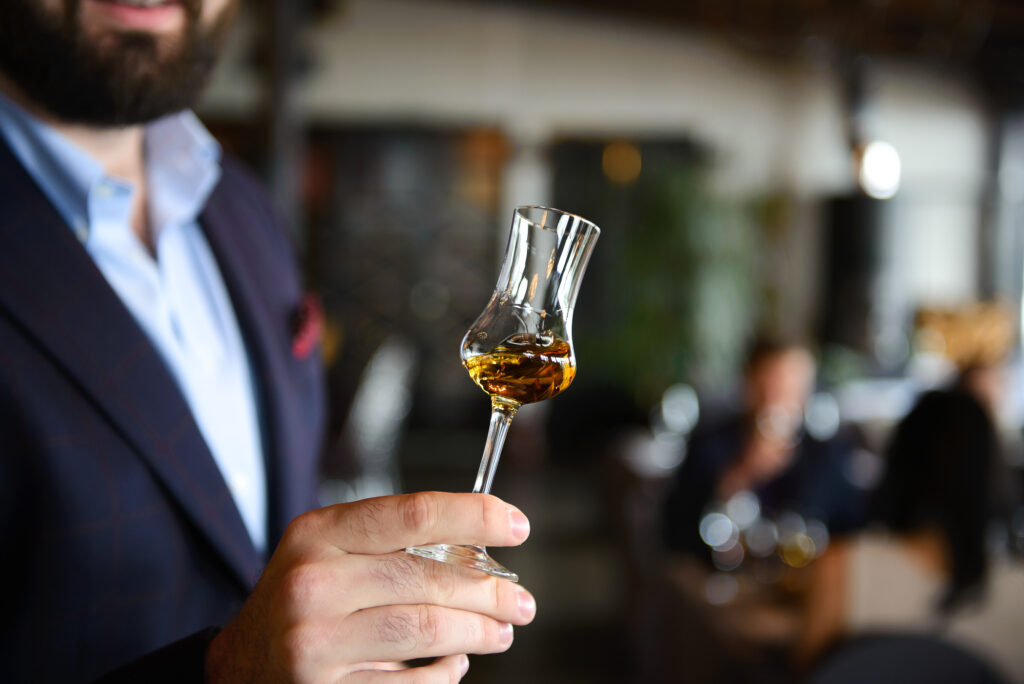
How to Taste and Appreciate Spirits
Tasting spirits is a captivating odyssey, where each sip unveils a story, a tradition, and a craft honed over centuries. This is not merely about drinking; it is about tasting, savoring, and understanding the essence of spirits that have traversed time and geography to reach your glass. The art of spirit tasting is a ritual, a bridge connecting the past with the present, inviting us to explore the depths of flavors, aromas, and the very soul of these distilled marvels.
Key Takeaways
- Understand the importance of the setup, including the right environment and tools, to enhance your tasting experience.
- Learn the techniques of professional tasters, from observing the spirit’s color to the correct way of smelling and tasting.
- Discover the intricate details about the origins, aging, and distillation processes that contribute to the spirit’s unique character.
The Setup: Preparing for a Tasting
Choosing the Right Environment
Creating the perfect environment is crucial for a successful tasting session. It should be a quiet, well-lit area free from distractions and strong odors that could interfere with the perception of the spirits. Ensure the temperature is comfortable and the lighting is conducive to observing the spirit’s true color.
Selecting Your Spirits
When selecting spirits for tasting, variety and quality are key. Aim to include a range of types and brands to fully explore the spectrum of flavors and aromas. It’s beneficial to have a theme, such as comparing spirits from different regions or focusing on a specific type of spirit like whiskey or rum.
Essential Tools and Glassware
Proper tools and glassware enhance the tasting experience. Use clean, appropriate glasses such as tulip glasses or snifters which are designed to concentrate the aromas. Essential tools include a water jug for cleansing the palate and a notebook for recording tasting notes.
Tasting Like a Pro: Tips and Etiquette
Observing Color and Clarity
Start your tasting experience by observing the color and clarity of the spirit. This initial visual inspection can provide clues about the spirit’s age and the type of cask used during aging. Hold the glass up to a light source and tilt it to examine its hue and transparency.
The Correct Way to Smell
Smelling, or nosing, is crucial for developing a refined palate. Gently swirl the spirit in the glass to release its full bouquet of aromas. Take short, quick sniffs rather than deep inhales to avoid overwhelming your senses.
Tasting and Evaluating
When tasting, take a small sip and let it coat your mouth. Focus on identifying the different flavors and textures. After swallowing, pay attention to the aftertaste or finish, which can reveal more about the spirit’s complexity and balance. Use a tasting notebook to record your impressions and track your progress in appreciating fine spirits.
Remember, the key to a successful tasting is patience and attentiveness. Allow yourself time to fully engage with each aspect of the spirit.
Understanding the Spirit: Beyond the Bottle
The Importance of Origin
Origin plays a crucial role in the identity of a spirit. The geographical location, climate, and local ingredients all contribute to the unique characteristics of each spirit. Understanding where a spirit comes from can enhance your appreciation and provide insights into its distinct flavors and aromas.
The Role of Aging
Aging is a transformative process that deeply influences the flavor profile of spirits. The type of cask used and the duration of aging determine the smoothness, color, and complexity of the final product. Spirits such as whiskey or rum can spend years in barrels, evolving with time to achieve their signature richness.
Influence of Distillation Techniques
Different distillation techniques can dramatically affect the taste and quality of spirits. Whether it’s pot still distillation for rich, full-bodied flavors or column still distillation for cleaner, more refined spirits, each method has its merits. Exploring these techniques can provide a deeper understanding of how spirits are crafted and what makes each one unique.
Avoiding Common Pitfalls
Common Mistakes to Avoid
Certain foods and fragrances have the power to linger, clouding your ability to fully appreciate the delicate balance and complexity of a spirit. To sidestep these common pitfalls, it’s advisable to avoid overly spicy, pungent, or aromatic foods prior to your tasting. These flavors can mask the subtle notes you’re seeking to uncover, skewing your perception and the spirit’s true profile.
How to Cleanse Your Palate
Adhering to proper palate cleansing techniques is crucial for a clear and unbiased tasting experience. Simple practices such as sipping water or eating neutral foods like plain bread or crackers can effectively reset your taste buds between different spirits.
Maintaining Focus During Tasting Sessions
To truly appreciate the nuances of each spirit, maintaining focus during tasting sessions is essential. Avoid distractions and engage deeply with the spirit in a dialogue that transcends the ordinary, elevating your sensory journey to an art form.
Conclusion
As we conclude our guide on how to taste and appreciate spirits, remember that this journey is as enriching as it is enjoyable. Each spirit offers a unique narrative, a blend of history, culture, and meticulous craftsmanship. By embracing the techniques and etiquette outlined, you not only enhance your sensory experience but also deepen your connection with the spirit’s heritage. Whether you’re a seasoned connoisseur or a curious novice, the world of spirits invites you to explore, taste, and appreciate its complexities. So, raise your glass to the art of spirit tasting, where every sip is a step deeper into the realm of distilled elegance.
Frequently Asked Questions
How should I prepare for a spirit tasting session?
Choose a quiet, well-lit environment, select a variety of spirits to taste, and ensure you have the right glassware and tools such as a spittoon and water for cleansing your palate.
What is the correct way to smell spirits during tasting?
Hold the glass beneath your nose and breathe in with both your nose and mouth. Avoid sticking your nose into the glass or swirling the spirit, as these actions can overwhelm your olfactory senses.
How can I avoid common pitfalls during spirit tasting?
Avoid common mistakes such as swallowing too quickly, not cleansing your palate between tastings, or losing focus. Take your time to savor each sip and engage with the spirit’s complexities.

The Ultimate Mother’s Day Gift Guide from Payless Liquor Stores
Mother’s Day is just around the corner, and it’s time to start thinking about how to express your appreciation for the incredible women in your life. If you’re looking for a unique and thoughtful gift that goes beyond the typical flowers and cards, Payless Liquor Stores has got you covered with this Mother’s Day Gift Guide. Whether your mom is a wine enthusiast, a craft beer aficionado, or enjoys a fine spirit, our curated selection ensures you’ll find the perfect token of appreciation.
For the Wine Lover
1. Elegant Reds and Refreshing Whites
Our wine collection boasts an impressive array of both red and white wines, perfect for moms who love to unwind with a glass of vino. From the full-bodied, complex flavors of a Cabernet Sauvignon to the crisp, clean notes of a Sauvignon Blanc, there’s something to suit every palate. Consider pairing a bottle with a set of hand-painted wine glasses for an extra special touch.
2. Sparkling Surprises
What better way to celebrate your mom than with some bubbles? Champagne and prosecco are synonymous with celebration, making them ideal gifts for Mother’s Day. Pick up a bottle of premium sparkling wine from Payless Liquor Stores and toast to your mom’s greatness.
For the Craft Beer Enthusiast
3. Local and International Craft Beers
If your mom appreciates the finer details of a well-brewed craft beer, explore our selection of local and international brews. From hoppy IPAs to smooth stouts, our range caters to diverse tastes and preferences. Create a personalized mix-and-match 6-pack to give her a world tour of flavors.
For the Spirit Aficionado
4. Premium Spirits
For moms who enjoy a beautifully crafted cocktail or a neat pour of fine spirits, Payless Liquor Stores offers an array of premium options. Whether she prefers the smoky allure of a good Scotch, the rich warmth of bourbon, or the crisp clarity of gin, you’ll find the perfect spirit to suit her taste.
5. Cocktail Kits
Why not gift a cocktail-making experience? Pick up one of our cocktail kits, which include everything she needs to mix her favorite drinks at home. It’s not only a gift but an activity she can indulge in and enjoy. Add a cocktail recipe book to inspire her creations.
Non-Alcoholic Delights
6. Gourmet Sodas and Non-Alcoholic Spirits
Celebrating doesn’t always have to include alcohol. For moms who prefer non-alcoholic options, we offer a selection of gourmet sodas and non-alcoholic spirits that don’t compromise on taste. These sophisticated alternatives are perfect for crafting delicious mocktails that she can enjoy any time.
The Extra Mile
7. Gift Baskets and Custom Orders
If you’re looking for something truly special, consider creating a custom gift basket at Payless Liquor Stores. Combine any of the above suggestions with gourmet chocolates, artisanal cheeses, and other delicacies for a personalized gift that caters to her specific tastes. Our staff is more than happy to help you assemble the perfect basket.
8. Gift Cards
Still undecided? A Payless Liquor Stores gift card offers the gift of choice, allowing your mom to select exactly what she wants. It’s a thoughtful gesture that gives her the freedom to explore our wide selection and find something she loves.
This Mother’s Day, celebrate your mom with a gift from Payless Liquor Stores that she’ll truly appreciate from our Mother’s Day Gift Guide. Whether she’s exploring new flavors or savoring her favorites, our selection is sure to make her day extra special. Stop by your nearest location or visit us online to find the perfect Mother’s Day gift. Remember, it’s not just the gift but the thought and love behind it that counts.
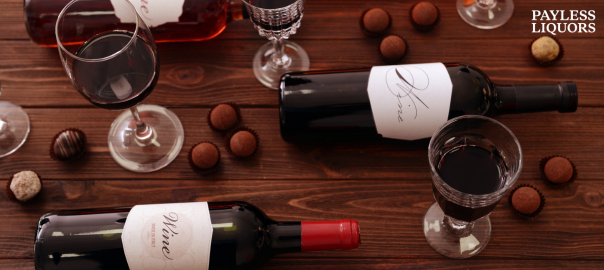
Exploring Dessert Wines at Payless Liquors
In the world of wines, dessert wines hold a special place with their sweet profiles and ability to perfectly round off a meal. At Payless Liquors, we believe that exploring dessert wines is akin to discovering hidden treasures that can transform ordinary moments into memorable celebrations. Whether you’re a seasoned wine connoisseur or a curious beginner, we invite you to join us on a sweet escapade through the enchanting world of dessert wines.
What are Dessert Wines?
Dessert wines, often referred to as sweet wines, are characterized by their significant sweetness and are typically served with dessert or as a dessert in themselves. However, don’t be fooled by the name—these wines can also beautifully complement savory dishes, making them a versatile choice for any dining experience.
There are several methods to achieve the sweetness in wines, including late harvest (leaving grapes on the vine longer), botrytis (a noble rot that concentrates the grape’s sugars), ice wine (producing wine from frozen grapes), and fortification (adding grape spirits to halt fermentation early).
Types of Dessert Wines Available at Payless Liquors
We take pride in our carefully curated selection of dessert wines from around the globe, each offering a unique taste and experience. Here’s a spotlight on some favorites:
Port Wine
Originating from Portugal, Port wine is a fortified wine known for its rich, luscious texture and deep flavors of chocolate, berries, and spices. It pairs wonderfully with strong cheeses, chocolate desserts, and even a cigar.
Ice Wine
Canada and Germany are renowned for their ice wines, which are made from grapes frozen on the vine. This method concentrates the sugars, resulting in a refreshingly sweet wine with vibrant acidity. Ice wines are perfect with fruit-based desserts or as a delightful glass on their own.
Sauternes
This exquisite French sweet wine is produced in the Bordeaux region, using grapes affected by botrytis. This gives the wine an incredible depth of flavor—expect notes of apricot, honey, and peach. Sauternes is a classic pairing with foie gras, but it can also elevate simple desserts, like lemon tart, to a new level.
Moscato d’Asti
Light, fizzy, and with a gentle sweetness, this Italian wine is a crowd-pleaser and pairs beautifully with light pastries and fruit desserts. Its low alcohol content makes it easy to enjoy any time.
Why Include Dessert Wine in Your Collection?
Versatility
From enhancing the dining experience to serving as a thoughtful gift, dessert wines are versatile. Their range of sweetness levels and flavor profiles means there’s a dessert wine for every palate and occasion.
Celebration
There’s something inherently celebratory about opening a bottle of dessert wine. Its sweet elegance brings a sense of occasion, whether celebrating a milestone or just the end of a busy week.
Culinary Exploration
Pairing food and wine is an art, and dessert wines open up new dimensions in culinary exploration. Experimenting with different pairings can unlock flavors in both the wine and the food that might otherwise go unnoticed.
Tips for Enjoying Dessert Wines
- Serve chilled to enhance the wine’s freshness and aroma.
- Consider the dessert pairing—balance is key. Aim for the wine to be sweeter than the dessert to avoid it being overshadowed.
- Don’t rush; dessert wines are meant to be savored. Pour small amounts and enjoy the evolving flavors as it warms in your glass.
At Payless Liquors, we’re passionate about helping our customers discover the joys of dessert wines. Our knowledgeable staff is always ready to guide you through our selection and help you find the perfect bottle for your next indulgence. Whether online or in-store, explore the sweet delights that await in our dessert wine collection. Here’s to sweet discoveries and unforgettable moments, one glass at a time. Cheers!
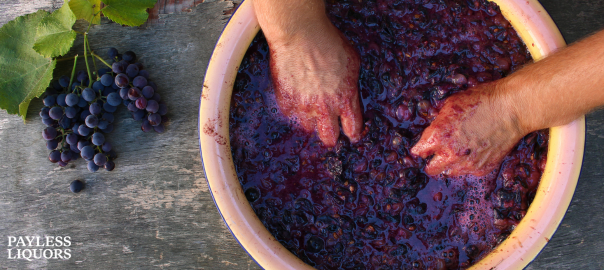
From Vine to Glass: A Journey Through the Wine Making Process
The art of winemaking is as intricate as it is ancient. Every bottle of wine is the result of a labor-intensive process that starts in the vineyard and culminates in the cellars, where each variety gains its unique character. It’s a story where natural elements and human hands intertwine to create an experience as diverse and nuanced as the wines themselves. In this blog post, we will explore the fascinating steps that transform grapes into the beloved drink that has been a centerpiece of countless cultures and celebrations through the ages.
Cultivation in the Vineyard
Choosing the Right Soil and Site
The wine making process begins with the selection of the site for a vineyard. Here, terroir—the unique environment in which each vineyard is located—plays a critical role. The soil’s mineral content, porosity, and drainage all contribute to the grape’s flavor profile. A well-chosen site ensures that the grapes have access to the right nutrients and water conditions, which is crucial for their growth and the quality of the wine.
Vine Planting and Tending
Once the site is selected, the next step is planting the vines. This is a meticulous process, as spacing and orientation are critical for both vineyard health and grape quality. Vines need consistent care throughout their life cycle, which can span decades. Trimming, training, and regular monitoring help ensure a good harvest each year.
Harvesting the Grapes
The timing of the harvest is one of the most important decisions a winemaker will make, as it directly impacts acidity, sweetness, and flavor. Grapes are typically harvested in the fall, but the exact time varies based on the grape variety, the climate, and the type of wine being produced. Modern techniques like infrared aerial monitoring aid in choosing the optimal time to pick the fruit.
Crushing and Pressing the Grapes
From Vine to Must
Once harvested, the grapes are typically transported to the winery where the process of turning grapes into wine, known as vinification, begins. The first step is crushing, where the grapes are broken to release the juice or ‘must’. This step can be as simple as foot-stomping in traditional winemaking or as complex as mechanized systems in larger productions.
Pressing for White Wines
In the case of white wines, the next step is pressing, where the juice is separated from the skins, seeds, and solids. The goal is to extract the juice as gently as possible to avoid adding bitterness from the seeds or overly tannic elements from the skin. Pressing for delicate whites is lighter than for reds, which can involve pressing with skins for color and flavor extraction.
Fermentation and Aging
Primary Fermentation
The must, now a blend of juice, skins, and seeds, is transferred into fermentation vessels where yeasts begin to convert the sugars into alcohol. This primary fermentation can take anywhere from a week to several months, depending on the desired outcome for the wine.
Secondary Fermentation
For some wines, particularly sparkling varieties like Champagne, a secondary fermentation occurs. This process can take place in the bottle or in large tanks, depending on the method. The result is the creation of the wine’s effervescence as carbon dioxide becomes trapped in the liquid, elevating it from flat to fabulous.
Aging the Wine
After fermentation, many wines are aged to develop complexity and character. This can happen in stainless steel tanks, oak barrels, or alternative vessel materials. The type and quality of the aging vessel can significantly influence the wine’s final taste, imparting it with oakiness, tannins, and other flavor elements.
Bottling and Beyond
Preparing the Wine for Bottling
Before wine can be bottled, it must be clarified and stabilized. This involves processes like fining, where substances that can cause haziness are removed, and filtration, which ensures a clean and clear final product. Stabilization techniques prevent the wine from spoiling or changing its chemical composition over time.
The Art of Blending
Some wines are the result of blending different grape varieties, as is common with many red Bordeaux wines. Blending is a precise art that aims to create a final product that is more than the sum of its parts, incorporating various aromas, flavors, and structures to strike a perfect balance.
Bottling and Labeling
Once the wine is ready, it is bottled, corked, and labeled. This is a crucial moment, as improper bottling can lead to spoilage, while unattractive labels can deter consumers. The information on the label, including region, vintage, and varietal, provides valuable context about the wine and helps consumers make informed choices.
Conclusion
The winemaking process is a complex and beautiful fusion of science and art. Each step, from the careful cultivation of the vine to the precise pouring of the final product, is an opportunity for winemakers to express their craft. This interplay of tradition and innovation results in a vast array of wine varieties, each with its own story to tell and experience to offer. By understanding the depth of effort that goes into creating a single bottle, we can develop a richer appreciation for the world of wine—a world where every sip is a chance to savor the fruits of a timeless process.
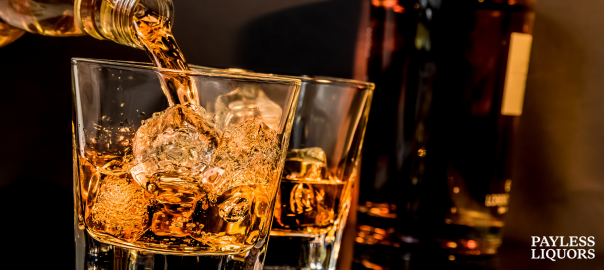
A Guide to Whiskey: Understanding the Different Types and How to Enjoy Them
Whiskey, sometimes spelled whisky, is a complex and beloved spirit that has captivated the palates and imaginations of aficionados for centuries. Originating from the Gaelic “uisge beatha” or “water of life,” whiskey comes with a rich history and a wide array of types. From the legendary Scottish single malts to the bold bourbons of America, whiskey’s diversity is part of what makes it so fascinating to explore. This guide is your map to the world of whiskey, helping you appreciate the nuances of each type and know how to savor them properly.
Demystifying Whiskey Types
Whiskey is more than just a spirit; it’s a category under which several distinct types fall, each with its own production process and unique flavor profile. These are the main varieties you should be familiar with:
Scotch Whisky
The Classic Elegance of Scotland
Scotch whisky is almost synonymous with sophistication. Made in Scotland, Scotch is typically distilled twice (though sometimes thrice) and aged for a minimum of three years. There are two primary types:
- Single Malt: Produced at a single distillery using malted barley. They are often considered the epitome of Scotch whisky, celebrated for their rich and varied flavors.
- Blended Scotch: A mix of one or more single malts with grain whisky. These blends offer consistency and a nuanced flavor profile.
Irish Whiskey
Smooth and Approachable
Irish whiskey is known for its smooth, light body, and triple distillation. It’s often the go-to whiskey for those just starting to explore the spirit. Common types include:
- Single Malt: Made from 100% malted barley and distilled at a single distillery.
- Single Pot Still: Also known as pure pot still, this unique Irish method includes a mix of malted and unmalted barley and results in a spicier taste than the single malt.
- Blended: Combines different malt and grain whiskies, providing a balanced and consistent profile.
American Whiskey
A Range of Flavors Across the US
American whiskeys come in various forms, the most notable being Tennessee whiskey and bourbon:
- Bourbon: Must be made from a grain mixture that is at least 51% corn and aged in new charred oak barrels. Known for its sweetness and high alcohol content.
- Tennessee Whiskey: Similar to bourbon, but made using an extra charcoal filtering process known as the Lincoln County Process, giving it a smoother flavor.
- Rye Whiskey: Made from a grain mixture that is at least 51% rye, offering a spicier and drier taste compared to bourbon.
Canadian Whisky
Light and Versatile
Often noted for its light and smooth profile, Canadian whisky can be made from a blend of grains and typically includes a higher percentage of rye.
Japanese Whisky
New World, Old Tradition
Japanese whisky has surged in popularity and is known for its balance and finesse. It draws inspiration from Scotch and often utilizes similar processes, resulting in some stunning expressions.
Other Whisk(e)ys
There are many other whiskies from around the globe, such as Indian whisky, Australian whisky, and more recently, African whiskies. Each brings a unique cultural twist and flavor palette to the table.
How to Savor Whiskey
Appreciating whiskey is not just about drinking it; it’s about engaging all your senses to savor the experience fully.
Tasting
The Nose Knows
Pour a measure into a tulip-shaped glass and take note of the color. Swirl it around to prime the glass with the spirit’s aroma, then take in the scent. Notes can range from the smoky-peaty tones of a Scotch to the caramel sweetness of a bourbon. Then, take a small sip, letting it coat your tongue to discern the full breadth of the flavor.
Pairing
Match Made in Heaven
Whiskey pairing doesn’t have to be complex. Dark chocolates, cheeses like cheddar and blue, and even a simple glass of water can enhance the tasting experience. The key is to find flavors that either contrast or complement the whiskey’s profile.
Cocktails
Versatility in a Glass
While many purists prefer to drink whiskey neat or with a splash of water, there’s a whole world of whiskey cocktails awaiting exploration. Classic drinks like the Old Fashioned and the Manhattan highlight the spirit’s rich notes and are always a hit.
Understanding Whiskey Lingo
To truly appreciate whiskey, it’s helpful to understand the language used to describe it. Here are a few terms to get you started:
Mash Bill
This is the recipe of grains used in the production of the whiskey. For example, a high-rye bourbon will have a higher percentage of rye in its mash bill.
Angel’s Share
The portion of whiskey that is lost to evaporation during aging in wooden barrels.
Peat
A major flavor component in many Scotch whiskies, peat is decomposed organic matter often used to dry malted barley, imparting a distinct smoky flavor.
Age Statement
The number on the label signifies the youngest whiskey in the bottle. The older the whiskey, the more complex and refined its flavors.
Where to Begin Your Whiskey Journey
If you’re just starting to appreciate whiskey, consider attending a tasting event at a local distillery or bar. It’s a great way to try different types and learn from experienced enthusiasts. Additionally, many whiskey brands offer virtual tastings, which provide an informative and entertaining way to explore new drams from the comfort of home.
The Takeaway
Whiskey is a spirit that rewards curiosity and exploration. With such a rich tapestry of types and flavors, there’s always something new to discover. Whether you’re sipping on a peaty Scotch beside a roaring fire or enjoying a smooth glass of bourbon with friends, each experience adds a chapter to your whiskey story. Cheers to your whiskey journey, and may it be as rich and varied as the spirit in your glass.

How to Taste and Appreciate Spirits

The Ultimate Mother’s Day Gift Guide from Payless Liquor Stores

Exploring Dessert Wines at Payless Liquors
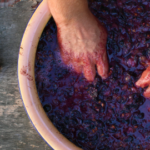
From Vine to Glass: A Journey Through the Wine Making Process

A Guide to Whiskey: Understanding the Different Types and How to Enjoy Them
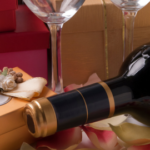
Spirited Selections: The Ultimate Gift Guide for Liquor Lovers

Alcohol Industry Trends to Watch
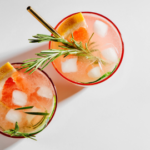
Spring into Flavor: The Top 5 Refreshing Cocktails for the Season

The Top 10 Most Expensive and Exquisite Spirits in 2024
